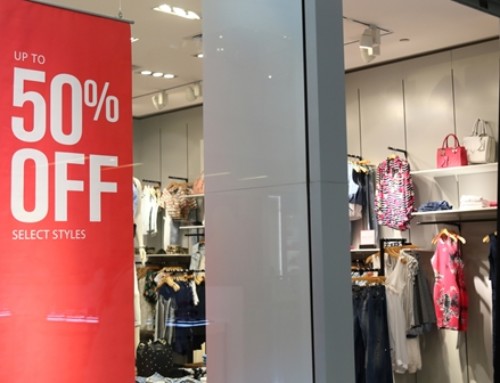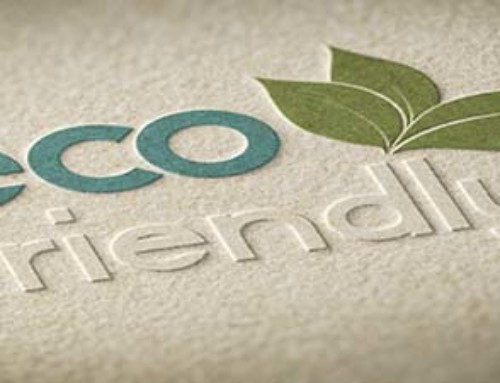Digital, offset, and screen printing are widely-used methods catering to unique needs. While all of these options are adaptable to various substrates (the material you print on) and deliver high-quality results, general use cases are as follows:
- Digital printing is best suited for flexibility and small runs
- Offset printing is best suited for large volumes and high-quality reproductions
- Screen printing is best suited for specialty products like apparel and large-format designs
In this guide, we’ll discuss these 3 types of printing; pros and cons in terms of substrates, customization, and turn-around times; and business use cases for each.
When to Use Screen Printing
Screen printing involves placing a mesh screen on a substrate, where each tiny opening of the screen is either filled with a specific color of ink or blocked off to create a stencil. The machine then applies each color separately in layers, allowing for precise control over the design.
While screen printing is more manual than digital printing, it offers greater control and flexibility, especially for producing vibrant, durable prints on various surfaces like paper, plastic, glass, and vinyl. This method is especially popular for bulk orders and custom designs, such as signage and promotional items, due to its ability to handle intricate details and bold colors.
“Businesses usually rely on us for screen printing large-format signage to draw in customers. For example, it’s popular for promoting sales or products on a store window – especially if they need specific brand colors or unique finishes like glitter”- Roy Waterhouse, GM at Hopkins Printing
Screen Printing Advantages
- Bulk order pricing: Pricing for screen printing is generally cost-effective for medium to large orders, especially when producing a lot of the same design or graphic. There can be a high initial setup cost for creating the screens or stencils, which makes it less cost-effective for small runs. However, the per-unit cost decreases significantly as you increase the quantity.
- Color vibrancy: Screen printing is known for its vibrant colors, since it uses thick layers of ink applied directly to the surface. It’s often the preferable choice for both clear and darker materials. You can even use special inks like metallic, fluorescent, or glow-in-the-dark. For this reason, it’s a popular choice for highly visible prints on products like clothing and banners, where vibrant color quality is important.
- Durability: Screen printing produces highly durable prints that are resistant to fading and wear, as the ink bonds well to fabrics and other materials (especially when done on textiles).
- Surface versatility: One of the biggest advantages of screen printing is its versatility across different surfaces. You can print on a wide variety of materials, including textiles, paper, plastics, wood, and glass.
Screen Printing Disadvantages
- Intricate or multi-color design: While screen printing offers plenty of customization options, it’s generally best-suited for designs that involve fewer colors. Complex designs with many colors can require multiple screens and additional setup time, which increases cost. You may also run into some limitations if you’re looking for intricate details or very small text, as the process can be less precise than with digital printing.
- Time sensitivity: Screen printing is not the fastest option, especially for small runs due to complex set-up. However, after setup is complete, it’s relatively quick for large quantities.
When to Use Digital Printing
Digital printing involves transferring digital images directly onto a printing surface through a digital file, which is uploaded into the printer’s software. In inkjet printing, tiny droplets of ink are sprayed onto the material, while in laser printing, toner is fused onto the material using heat and pressure.
Hopkins Printing uses large format digital printing (also called wide-format, flatbed, or UV sheet digital printing), which uses an inkjet array and color correction technology. We implement the latest Inca X2 technology.
“We usually recommend digital printing for standard vibrant colors and long runs. It’s especially popular for large signage, such as a 4×8 foot window.”-Roy Waterhouse, General Manager, at Hopkins Printing
Digital Printing Advantages
- Customization: Digital printing is cost-effective for variable data printing (such as personalized invitations or business cards) because digital files can be easily altered without significant added cost. Additionally, this method makes it easy to print multiple colors and gradients.
- Time sensitivity: Digital printing excels at fast-turnaround time and on-demand orders that may be adjusted frequently.
- Color vibrancy: Digital printing works well with designs with complex color schemes, gradients, or photographic images where color fidelity and detail are essential. However, the color quality might not always be as intense or rich as screen printing with specialty inks, especially for items like apparel or promotional materials where vibrant, heavy ink layers are important.
- Small run pricing: Since there are no set-up costs, digital printing may be cheaper than other methods for small orders. However, because there are no economies of scale that lower the cost as you increase the quantity, offset and screen printing may be more cost-effective for large orders.
Digital Printing Disadvantages
- Surface versatility: Digital printing is best done on flat, smooth surfaces (like paper, glass, or wood). It’s not a good option for uneven surfaces like bottles or textiles.
- Durability: This method is generally less durable than off-set and screen printing, especially in the cases of UV exposure or abrasion. However, UV-resistant inks and finishes can provide longer-lasting results.
When to Use Off-Set Printing
Offset printing is a traditional printing method that uses a series of rotating cylinders to transfer ink onto a printing surface. An image or text is first transferred onto a metal plate, which is then dampened with ink. The inked plate is pressed against a rubber blanket, and from there, the image is stamped onto the paper or other materials. This sequence of steps ensures that the ink is applied evenly and accurately across large volumes of prints.
Off-set printing is typically used for large orders of identical items requiring color precision, such as magazines, newspapers, books, and brochures.
“Hopkins Printing uses screen printing for paper products, like B2B sales literature, postcards, direct mail, and brochures. Our internal control color scanners keep color very consistent, which is especially important to businesses like banks and hospitals with strict brand guidelines.”-Roy Waterhouse, GM at Hopkins Printing
Offset Printing Advantages
- Bulk order pricing: Offset printing is highly efficient for bulk printing because the setup costs (plates, press setup) are spread over a large number of copies, significantly lowering the cost per unit.
- Vibrant colors: Offset printing provides excellent color consistency and sharpness.
- Exact color matching: Offset printing uses Pantone color matching, which ensures precise and consistent color results, making it a preferred method for brands that require exact color reproduction.
- Durability: Like screen printing, offset printing ink bonds well to many substrates, giving a long-lasting effect.
Offset Printing Disadvantages
- Customization: Offset printing is not as easily adaptable to changes or variable data printing as digital printing. Customization typically requires the creation of new plates, which makes it impractical for projects that involve frequent updates or personalization.
- Time sensitivity: Due to setup times of creating plates, adjusting the press, and calibrating colors; offset printing is not ideal for quick turnarounds.
- Surface versatility: While offset is versatile with most flat materials, it’s not as adaptable to irregular or 3D surfaces (like bottles, T-shirts, or unique shapes) as screen printing. It requires specialized equipment when working on these types of surfaces.
Choosing the Best Printing Vendor
When selecting the best printing vendor, it’s important to be able to identify red flags. Be wary of businesses that ask for specs and deliver a quote with no further discussion. Printers that don’t want you to visit the facility and are slow to respond may also be hiding something.
At Hopkins Printing, customers are welcome in our facility to see our process from start to finish. We take a collaborative, consultative approach to your printing needs. From the early creative phases to engineering, packaging, and logistics; we offer solutions every step of the way. Our goal is to ensure quality printing and safe packaging and delivery of products. Learn more about our retail signage, POP display printing, and specialty printing services.



